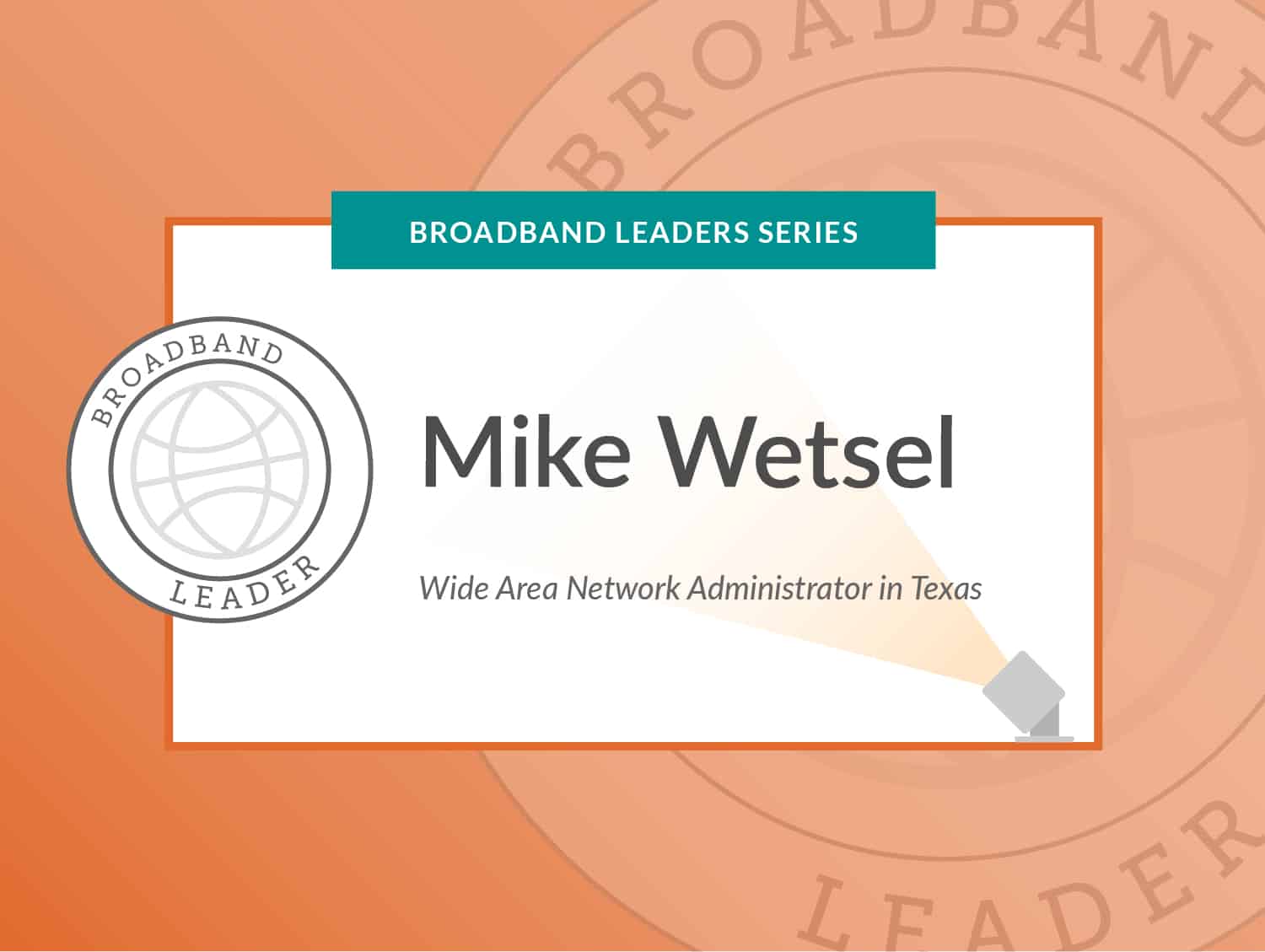How did you make the consortium upgrade approach work?
When the Governor and Commissioner announced that they wanted fiber to go to all school districts in Texas, I connected with EducationSuperHighway. Forty-one school districts in ESC 14 were already connected with fixed wireless and grouped up in a consortium model, making it a perfect opportunity for them to upgrade. With the average E-rate discount rate across the districts at 78%, I realized that they would be able to receive fiber – which had been the missing piece – for low costs. With the combination of the 10% state match, the 10% Federal Communications Commission match, and our E-rate discount, we could obtain upgraded fiber infrastructure at a 98% discount.
Tell us more about the consortium project. What made it successful, and did you encounter any challenges along the way?
One reason the project succeeded was because we split the upgrade into two phases, and had four schools lit up and on fiber quickly. Another component of success involved convincing the districts to upgrade to fiber via the consortium. In our conversations, we convinced them to switch over to fiber by reminding them that this was a one-time opportunity with state match and the FCC match to help fund the cost. In the end, it was a pretty simple pitch – the districts knew they would get a lot more bandwidth but only have to pay a little more each month.
Later, we faced some obstacles in the upgrade process. Our average discount dropped to 77% due to changes in the student population across the districts. That 1% difference translated to an extra $450K for my districts. There were other construction delays and permitting issues that came up, but we extended phase one to finish tackling all the obstacles.
In the long term, we are moving more in the direction of a hybrid fiber/wireless solution due to the high cost of running fiber to some of the districts. We had been moving gradually by getting the larger districts onto fiber first, but using wireless for the smaller outlying districts. Right now, we are waiting on phase two funding to be released after being approved.
What can the school districts expect as the consortium continues to upgrade each campus?
I don’t think a lot of districts understand just quite what they’re getting. They know fiber is faster than wireless, and they also know that their cost per month is going to drop after Phase 2 from about $40K/month to $5,500/month. They understand that what they’re going to get is more speed for less money. However, they are only beginning to understand what they will be able to do with the faster speeds. The first four schools that were already on fiber saw a tremendous new ability to use anything they could imagine on the Internet. They didn’t have to worry about the time of day or other concerns to access the Internet.
“I don’t think a lot of districts understand just quite what they’re getting. They know fiber is faster than wireless, and they also know that their cost per month is going to drop after Phase 2 from about $40K/month to $5,500/month.“
We’re going to have the ability to share resources that we’ve never even thought about sharing. Hopefully, this will give the schools the ability to be a hub inside their communities. We’re going to have a time when we can just use the Internet and not even think about it being slow.
How did the upgrade benefit the classrooms and students?
Christy Cate, a digital innovation consultant at ESC 14, let me know that in the classrooms, the decreased monthly cost translates to more funding for more devices in the hands of students. Accessible devices and the bandwidth to use them allows for collaboration in the classroom, across districts, and even beyond the rural area of our community. The students have been able to participate in activities such as Mystery Hangouts with other students around the country, share documents for classroom collaboration, and work on projects such as Monster Match creation and “A Day in the Life”. This is all done with G Suite tools and their devices.
Teachers have also been able to stream videos and share visual resources without being hindered by slow connections. In our region, blended learning has now become a reality for all classes, not just a few rooms, a few campuses, or a few districts. From a technical perspective, we are able to host a district active directory and other servers. This means that we can focus funding more towards classrooms and less towards technical management of systems.
ESC 14 in Texas has been able to make tremendous progress on upgrading school districts by taking on the consortium upgrade approach. In turn, school districts have been able to reduce their monthly recurring costs for Internet, and get higher bandwidth speeds. Find out how your school district can use the power of group negotiations to upgrade.






